In May 1985, Greenpeace took on a mission unlike anything they had done before – to mass relocate the people of Rongelap atoll in the Marshall Islands, whose ancestral home was no longer safe as a result of the US government's nuclear testing in the region. About 350 people were relocated, including livestock and 100 metric tons of building material, to Mejatto, another island about 180 km away.
This is the story behind "Operation Exodus" – one Rainbow Warrior boat and an island community, versus a huge colonial power who discredited the act as "manipulation" for Greenpeace's anti-nuclear agenda.
As we mark 40 years since this defining moment in Greenpeace and Marshall Islands history, Bunny McDiarmid, one of the original crew members, looks back on her experience.
1985 – "We love the future of our kids"
Joining the Rainbow Warrior as a deckhand was my first "real" experience with Greenpeace. One of our initial tasks in a "back-of-beyond" boatyard in Jacksonville, Florida was to change her from a motor boat to a sailing boat – she turned beautifully as if she was always meant to be a sailing vessel.
In the eighties, nuclear was Greenpeace's primary focus, which coincided with the Nuclear Free and Independent Pacific Movement, a strong campaign to have the whole Pacific region declared a nuclear free zone. Between 1946 and 1958, 67 nuclear bombs were detonated on the Marshall Islands, and the people on Rongelap suffered severe health impacts, such as miscarriages, as a result of radioactive fallout.
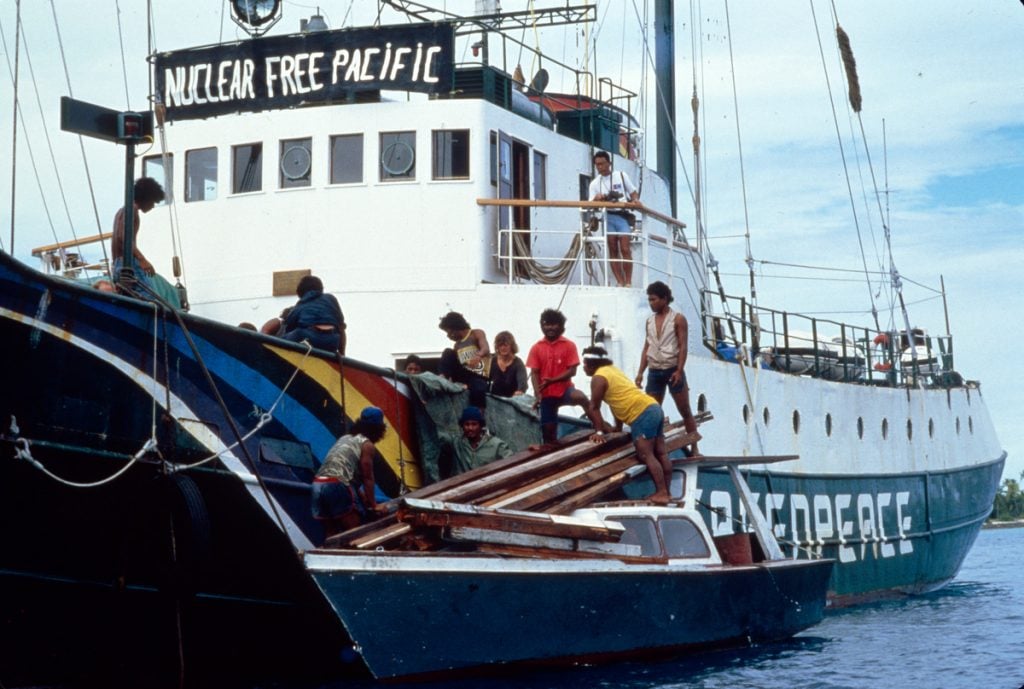
When we arrived in Hawaii, en-route to the Marshalls, Rongelap Senator Jeton Anjain came on board and asked Greenpeace US/International campaigner Steve Sawyer if Greenpeace would help move his people away from Rongelap atoll. Jeton was quietly spoken, but I learnt over the years that this was a person with considerable stamina and fortitude – I am yet to meet a more resilient and determined man. His gentle demeanour makes him easy to underestimate, which the US had clearly done.
Arriving in Rongelap on May 17 1985, I remember it like it was yesterday. Sunny, hot, clear blue skies, the Rongelap lagoon endless into the distance, and a small "bum-bum" (plywood motor boat) coming out to meet us. A group of women were on board all waving at us, and one held a sign on a square piece of white sheet that read, "We love the future of our kids". She was dabbing her eyes – and this set the scene and tone.
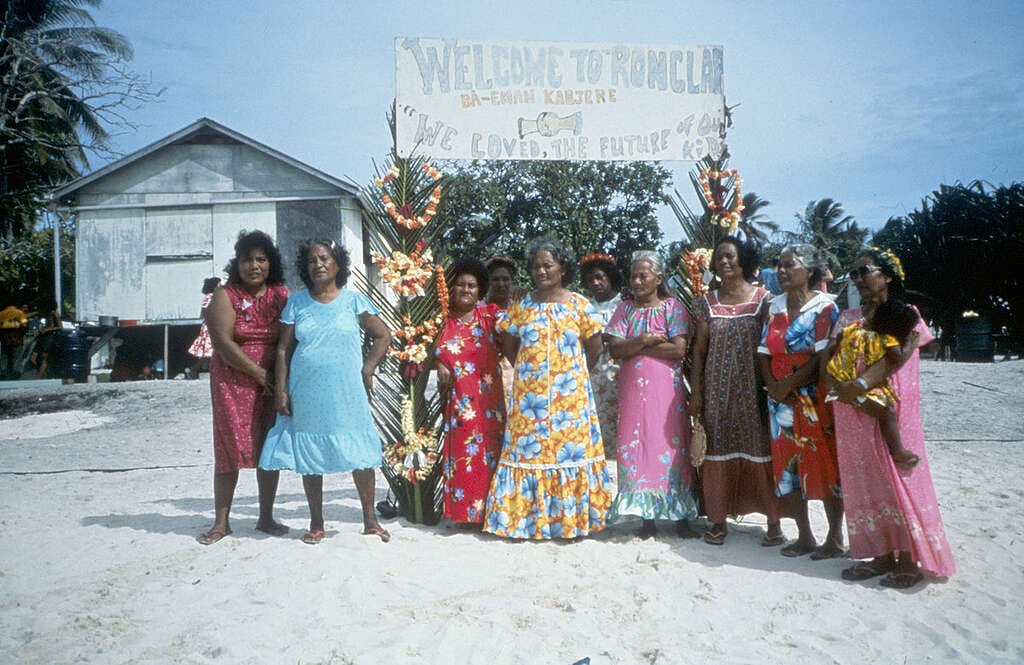
We anchored, changed out of shorts and tank tops and into clean dresses and shirts. We came ashore to the older women all singing to us under an archway which also read, 'Welcome, we love the future of our kids". They greeted us with leis and handed us fresh coconuts to drink. It was not solemn but also not joyous – it was just us and them meeting each other as strangers.
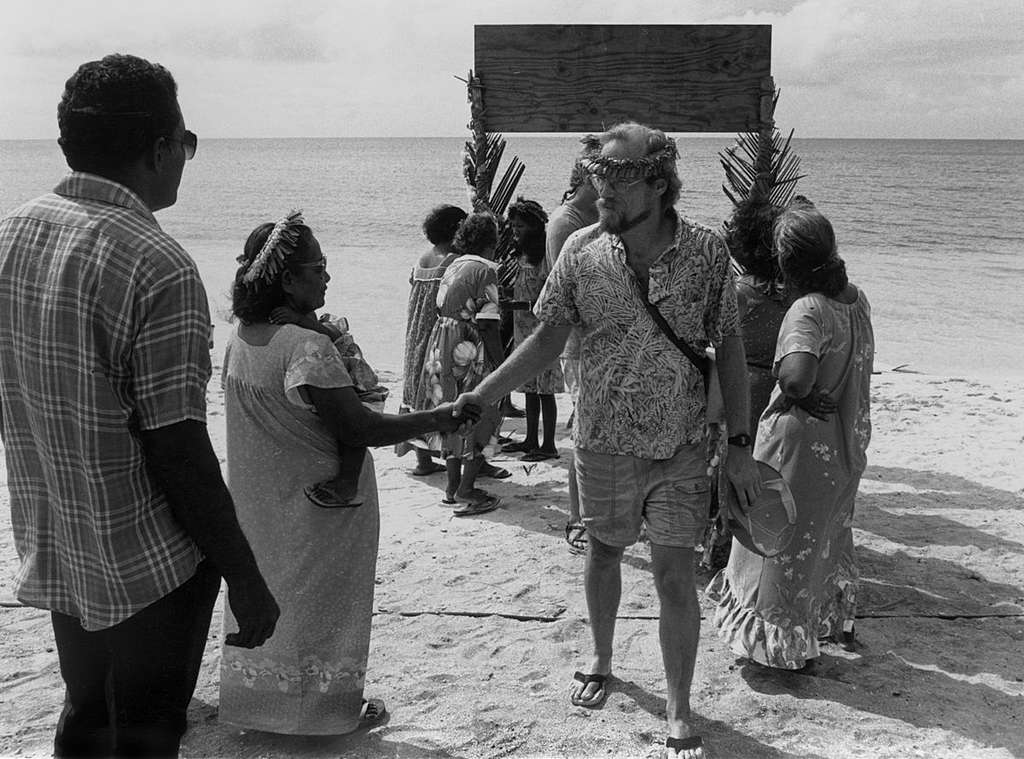
It took more meetings, talking, and a church service before the work to start loading the Warrior began. Although we did not understand what everyone was saying, it felt important, respectful, and purposeful, with Jeton explaining again why it needed to happen. We were included and listened and felt the heft, the weight of what they were deciding to do, and what we were helping them with.
It was then all shoulders to the wheel as we worked to load the inflatables, and the bum-bum with all manner of belongings. Every house was being taken apart, including all their household goods, and everyone from the youngest to the oldest were preparing to leave. The work set our minds to the task and off the heavy burden of the event.
Altogether, it took four trips and approximately 100 nautical miles between Rongelap and Mejatto to move everyone and everything. We were loaded to the max, sometimes with 100 plus people on board, camped out everywhere – in the cabins, the mess room, the aft deck and lower deck. No one wailed or cried, but weighing anchor and watching people saying goodbye to their home island and moving into the distance was hard.
With this evacuation, the Marshallese story and the Greenpeace story bonded. It affected all of the crew, many who have since said it was the best and most meaningful thing they were involved in with Greenpeace.
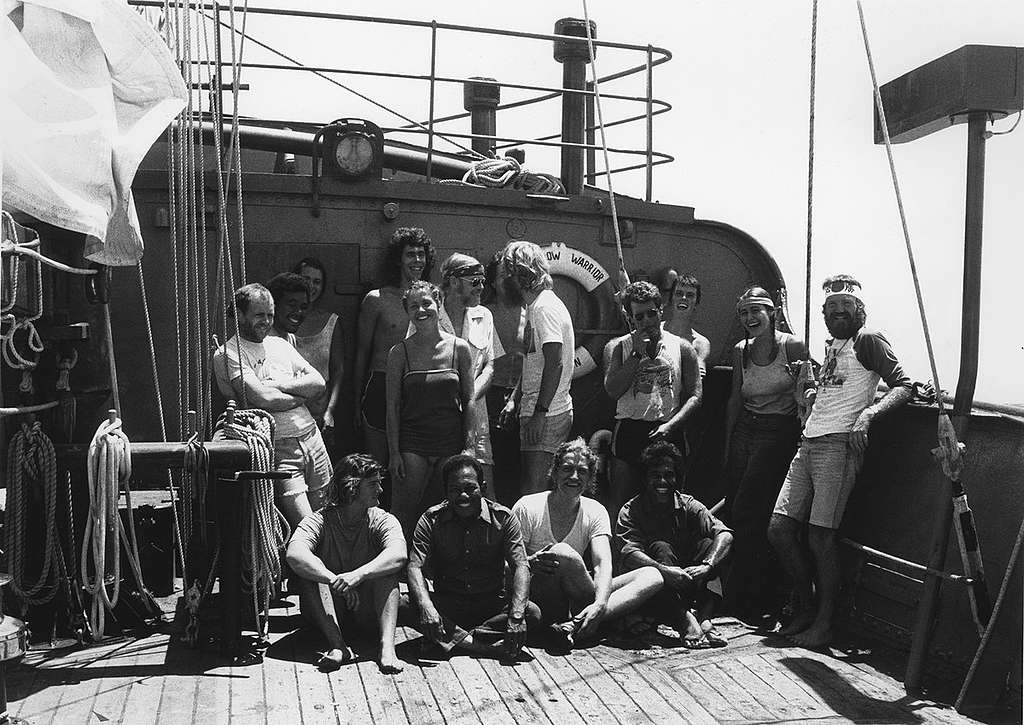
For myself and my partner Henk (Haazen), who was an engineer on the Warrior, we returned to Mejatto a year later and spent three months there. The outcome of a conversation we had with some of the older women on Mejatto resulted in Greenpeace funding the building of a plywood catamaran in the Marshalls and with Rongelap men working on it, so that they could have more reliable transport.
Operation Exodus and everything the Marshall Islands people went through, put a human face on the nuclear issue – it wasn't just technology and political negotiations, it was real people that gave up so much to protect their kids and their futures. The world could learn a lot from this community.
2025 – Some things don't change whilst others do
I have been back to the Marshall Islands a number of times since 1985, but to be present for the 40th commemoration of the evacuation of the Rongelap community was a real privilege.
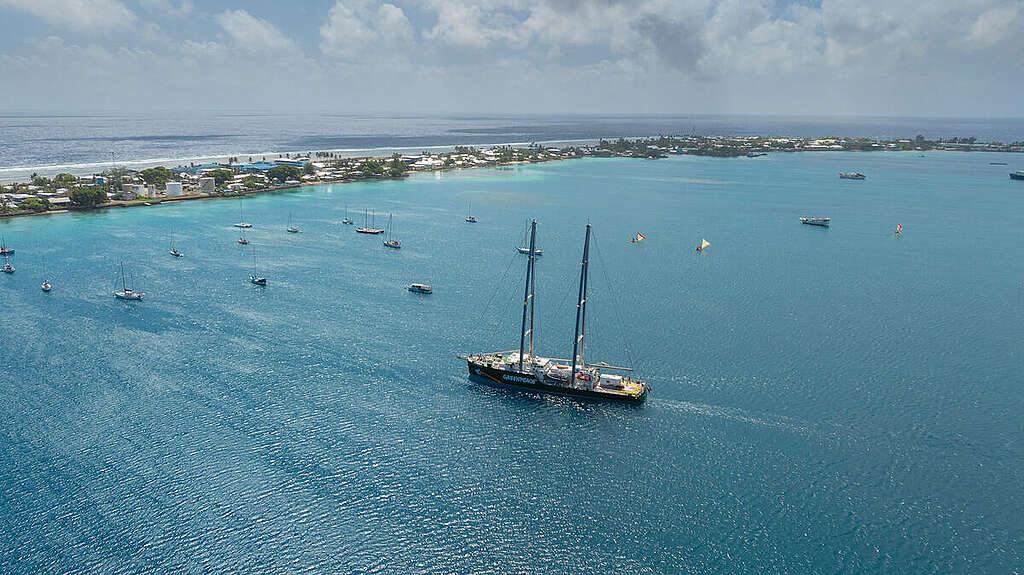
At the welcoming ceremony for the Rainbow Warrior in the capital Majuro, I felt my eyes well up when I saw what the Rongelap community were wearing – t-shirts printed with a picture of Senator Jeton Anjain and Steve Sawyer talking together on the Warrior from 1985. This beautiful sartorial surprise said it all – this was not just a smart political move by Jeton to ask Greenpeace to move his community, to which Steve was brave enough to commit Greenpeace to do, but it was the beginning of a long friendship between Greenpeace and Rongelap.
Giff Johnson, editor of the Marshalls Islands Journal, had the same emotional reaction to seeing the t-shirts. He was the man that had brought Jeton and Steve together all those years ago.
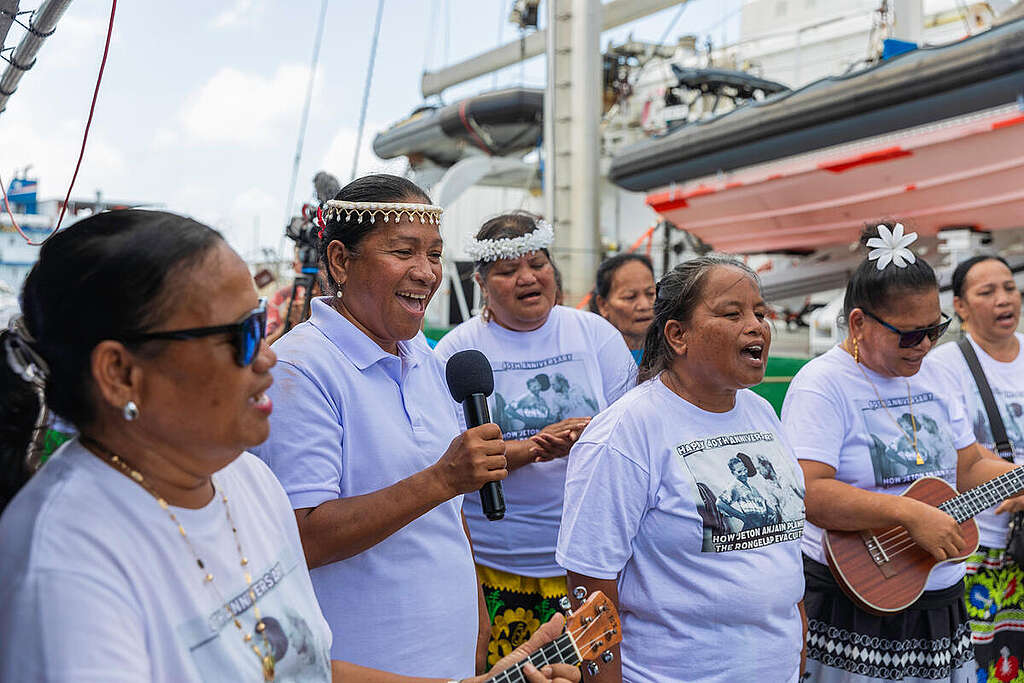
Returning to Mejatto on the Warrior brought back lots of memories and how some things don't change whilst others do. The welcoming ceremony was huge! They lined the beach again with leis and coconuts, with the whole community singing and out to greet us.
Left: March 2025 – Bunny McDiarmid returns to Mejatto, Marshall Islands.
Right: May 1985 – Women of Rongelap island welcome Bunny McDiarmid, as crew members from the Greenpeace ship Rainbow Warrior I arrive ashore on the atoll.
One of the best things that came from the time Henk and I spent in Mejatto was not just the catamaran Greenpeace funded for the community, but the real friendships and connections that lasted over time. It was great to meet again some of the family of Anjain's that looked after Henk and I for those three months, and that we have continued to stay in touch with over the years. It was Jeton's birthday during the time when we were there – Jeton died in 1997 and his grave and his brothers are buried next to each other on Mejatto. The Anjain family asked Henk and I to be part of the family photograph at Jeton's grave site, and it felt such an honour to be part of that.
The island, thank goodness, has so much more food growing there! Pandanus, breadfruit, and coconuts, though the fishing is still pretty hard going. But man did they pull out all the stops to feed us, which is a very big deal for a community that often has little extra to spare. But like all across the Pacific, sharing food is always the strongest indicator of friendship and hospitality.
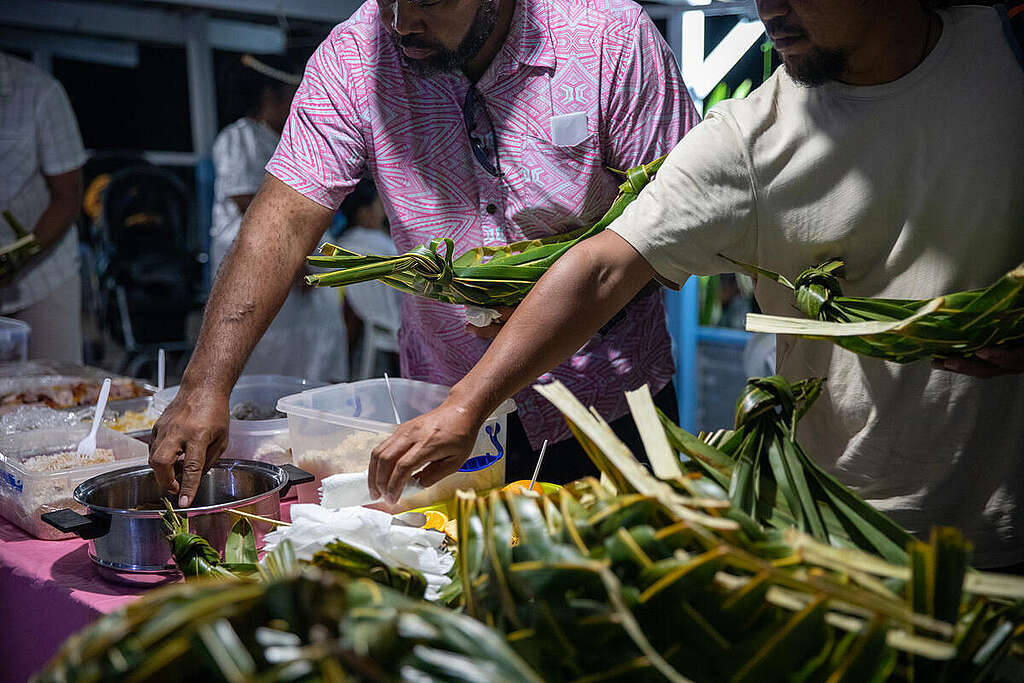
We loved meeting people who were 10 or 15 in 1985, but were now 50 or 60 years old. One of the men who was in his 20s in 1985 had given Henk an outrigger canoe - there were five outriggers that had to be left behind on Rongelap as their drafts were too deep for the Mejatto coast, and these were beautiful working boats. Henk left behind a dugout canoe we had on board the Warrior from Nicaragua. Fair exchange! When this man, Allat, saw Henk again in Majuro, the first thing he said was, "Hey Henk, when are you bringing back my outrigger?". They both laughed and hugged at the recognition and memory.
The Marshallese have seen many people pass through with good ideas and plans, and many never return or make promises that are not met. In 1985 we tried hard not to raise expectations of what we could do. We answered their call to help them relocate and the decision they made to rescue themselves and leave their home island was truly brave. It resulted in them finally getting an independent scientific assessment of Rongelap, which confirmed their worst fears and experiences – that their island was still badly contaminated and unsafe to continue living on.
Left: Rongelap church, 1985.
Right: Rongelap church, 2025. Greenpeace radiation experts and independent scientists were in Rongelap to sample soil and foodstuffs on the islands if people came back.
Forty years later, our purpose was not just to reconnect, but also to conduct crucial research across the atolls, providing much-needed data on remaining nuclear contamination. Strong bonds have been formed and we cannot forget this defining part in both the Marshall Islands and Greenpeace history. It keeps our friendship and their struggle alive and in retelling this story I hope others will know it and join our effort towards justice – Jimwe im Maron.
Bunny McDiarmid was a deckhand during the 1985 voyage. Now retired, she formerly served as executive director of Greenpeace NZ/Aotearoa (2005-2015) and executive director of Greenpeace International, together with Jennifer Morgan (2016-2019).






